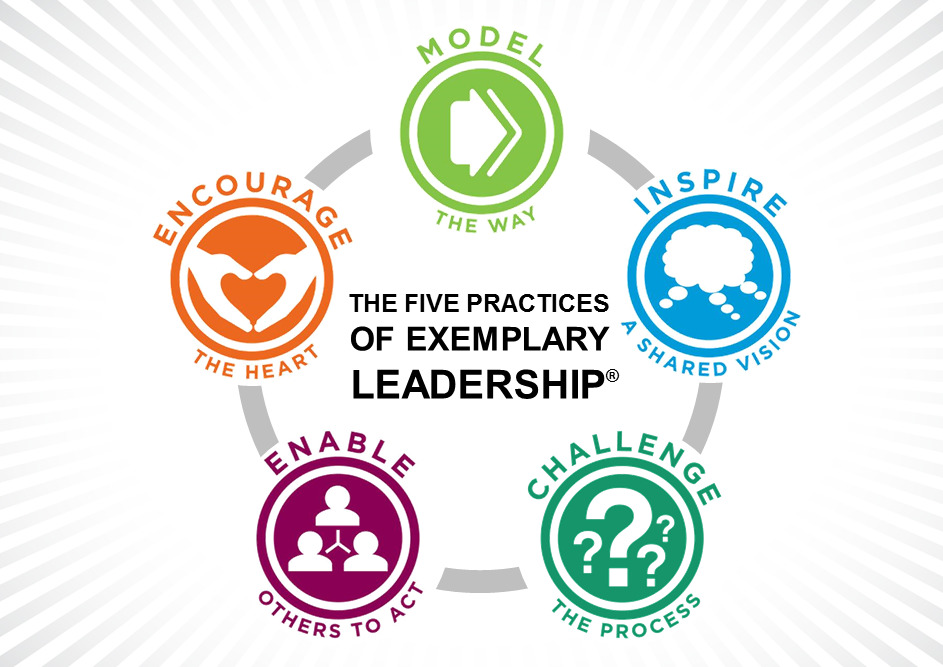Effective leadership is about creating reciprocal relationships between the leader and followers, subordinates, or constituents that in turn creates the foundation for organizational and group success.
The Kouzes and Posner’s Five Practices of Exemplary Leadership Model has been noted for its contributions to the Relational Leadership paradigm. Kouzes and Posner (1987) conducted research in the area of “personal best” leadership experiences. They developed a “Personal-Best Leadership Experience” questionnaire, asked thousands of managers to complete the questionnaire, and conducted many follow-up interviews to gather additional information. The personal-best questionnaire asked managers to pick a project, program, or event that they characterized as their “personal-best” leadership experience. After analyzing the data collected from questionnaires and interviews, Kouzes and Posner found that despite the variety in situations and types of leadership experiences, similar patterns were identified related to actions taken by the leaders during the experience. Through the analysis process they identified “Five Practices of Exemplary Leadership” that contributed to “getting extraordinary things done in organizations”:
- Modeling the Way,
- Inspiring a Shared Vision,
- Challenging the Process,
- Enabling Others to Act and
- Encouraging the Heart.
The first practice is “Modeling the Way,” in which leaders role model the behaviors they want the see in their constituents. Through action and involvement, leaders earn the right to lead and the respect of their followers.
The second leadership practice is “Inspiring a Shared Vision.” This is when the leader imagines what the organization could be and then creates a vision that is attainable and attractive. The leader connects this new vision to the hopes and dreams of his or her constituents to generate passion and enthusiasm for realizing the vision.
The third leadership practice is “Challenging the Process.” Exemplary leaders are pioneers who know that innovation and change involves “experimentation, risk, and failure”. A leader understands that change can feel uncomfortable and then builds constituent confidence by pursuing change incrementally and by accomplishing small victories.
The fourth leadership practice involves “Enabling Others to Act.” Successful leaders understand that leadership is a team effort and are not afraid to share the leadership process. Leaders foster collaboration and build trust by supporting and encouraging their constituents to do good work. Leaders who are able to build trusting and collaborative relationships find that their constituents are higher performers and even exceed their own personal expectations.
Finally, exemplary leaders “Encourage the Hearts” of their constituents to help them carry on in the face of challenge, frustration, and discouragement. Leaders know that “celebrations and rituals, when done with authenticity and from the heart, build a strong sense of collective identity and community spirit that can carry a group through extraordinarily tough times”.
